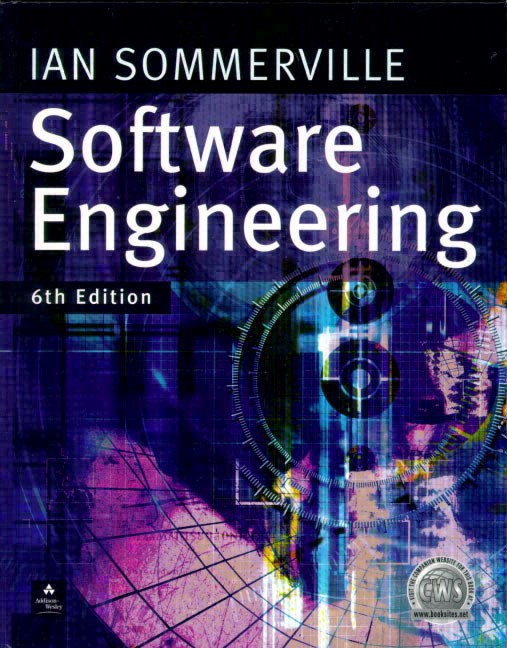
Software Engineering 6th Edition Ian Sommerville Pdf Ian sommerville software engineering 6th edition awal, connect to download get pdf ian sommerville software. Software Engineering 6TH Edition by Ian Sommerville available in Hardcover on Powells.com, also read synopsis and reviews. Software Engineering presents a. Software Engineering (10th Edition) [Ian Sommerville] on Amazon.com. *FREE* shipping on qualifying offers. For courses in computer science and.
Software Engineering presents a broad perspective on software systems engineering, concentrating on widely used techniques for developing large-scale systems. The objectives of this seventh edition are to include new material on iterative software development, component-based software engineering and system architectures, to emphasize that system dependability is not an add-on but should be considered at all stages of the software process, and not to increase the size of the book significantly.
To this end the book has been restructured into 6 parts, removing the separate section on evolution as the distinction between development and evolution can be seen as artificial. New chapters have been added on: Socio-technical Systems A discussing the context of software in a broader system composed of other hardware and software, people, organisations, policies, procedures and laws. Application System Architectures A to teach students the general structure of application systems such as transaction systems, information systems and embedded control systems. The chapter covers 6 common system architectures with an architectural overview and discussion of the characteristics of these types of system. Iterative Software Development A looking at prototyping and adding new material on agile methods and extreme programming.

Component-based Software Engineering A introducing the notion of a component, component composition and component frameworks and covering design with reuse. Software Evolution A revising the presentation of the 6th edition to cover re-engineering and software change in a single chapter. The book supports students taking undergraduate or graduate courses in software engineering, and software engineers in industry needing to update their knowledge.
Book Preface Readership The book is primarily aimed at university and college students taking introductoryand advanced courses in software and systems engineering. Software engineers inthe industry may find the book useful as general reading and as a means of updatingtheir knowledge on topics such as software reuse, architectural design, dependabilityand security, and process improvement. Tony Hawk S Proving Ground Torrent Pc Game here.
I assume that readers have completed anintroductory programming course and are familiar with programming terminology. Changes from previous editions This edition has retained the fundamental material on software engineering that wascovered in previous editions but I have revised and updated all chapters and haveincluded new material on many different topics. The most important changes are: 1. The move from a print-only book to a hybrid print/web book with the web material tightly integrated with the sections in the book. This has allowed me to reduce the number of chapters in the book and to focus on core material in each chapter. Complete restructuring to make it easier to use the book in teaching software engineering.
The book now has four rather than eight parts and each part may be used on its own or in combination with other parts as the basis of a software engineering course. The four parts are an introduction to software engineering, dependability and security, advanced software engineering, and software engineering management.
Several topics from previous editions are presented more concisely in a single chapter, with extra material moved onto the Web. Additional web chapters, based on chapters from previous editions that I have not included here, are available on the Web.
I have updated and revised the content in all chapters. I estimate that between 30% and 40% of the text has been completely rewritten. I have added new chapters on agile software development and embedded systems.
As well as these new chapters, there is new material on model-driven engineering, open source development, test-driven development, Reason’s Swiss Cheese model, dependable systems architectures, static analysis and model checking, COTS reuse, software as a service, and agile planning. A new case study on a patient record system for patients who are undergoing treatment for mental health problems has been used in several chapters. Using the book for teaching I have designed the book so that it can be used in three different types of softwareengineering courses: 1. General introductory courses in software engineering The first part of the book has been designed explicitly to support a one-semester course in introductory software engineering. Introductory or intermediate courses on specific software engineering topics You can create a range of more advanced courses using the chapters in Parts 2–4.